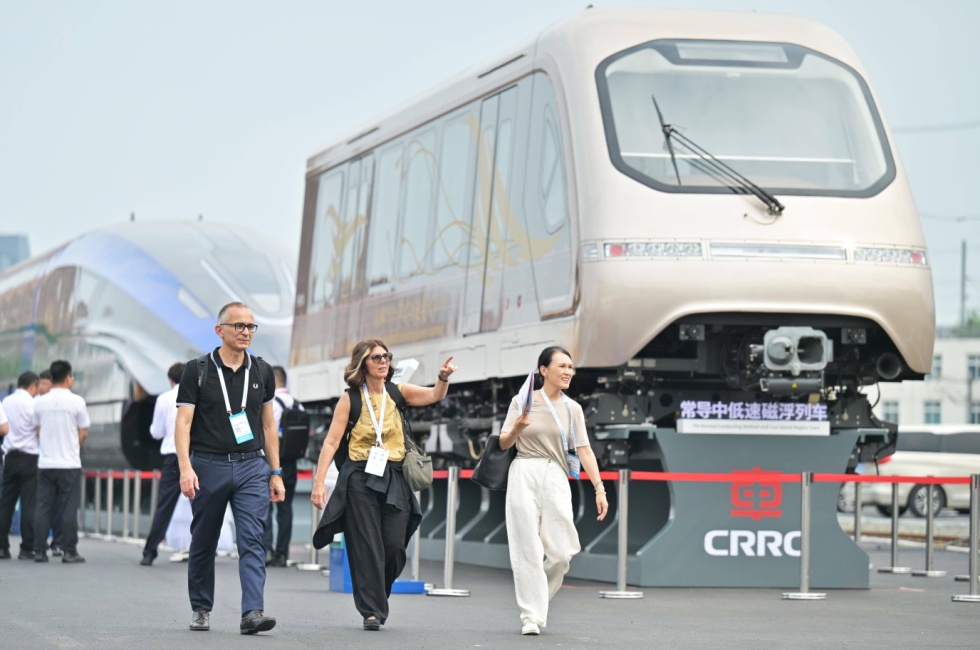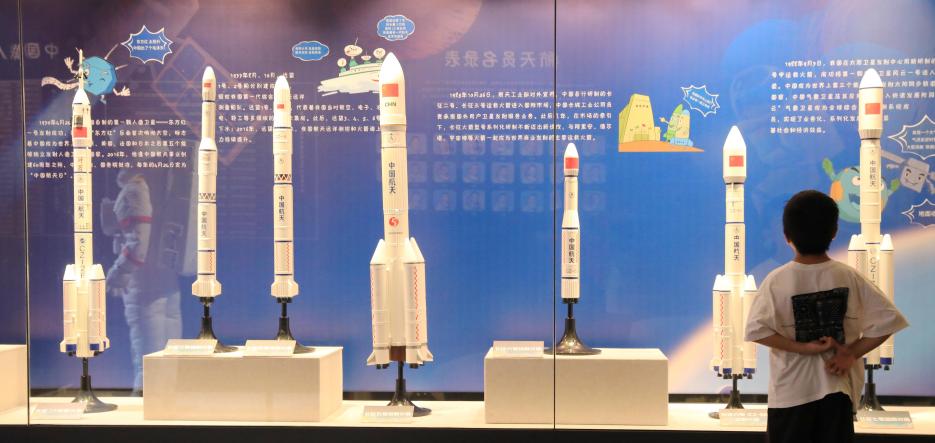China accelerates innovation to drive high-quality development and global cooperation

High-speed trains are exhibited at the 12th World Congress on High-Speed Rail held in Beijing, on July 9, 2025. (Photo by Wang Wei/People's Daily Online)
Two recent events have drawn global attention.
Global industry leaders convened at the 12th World Congress on High-Speed Rail in Beijing to explore innovation under the theme "High-Speed Rail: Innovation and Development for a Better Life".
Meanwhile, the inauguration ceremony of the International Deep Space Exploration Association was held in Hefei, east China's Anhui province, marking the launch of China's first international academic organization dedicated to deep space exploration, a new chapter in China's global space cooperation.
These dual initiatives - one advancing terrestrial connectivity, the other propelling humanity's cosmic pursuits - exemplify China's commitment to technological self-reliance and global innovation partnerships.
Recent reforms have positioned science and technology at the core of nation's high-quality development within a clear long-term blueprint.
At a recent press conference on the successful implementation of the 14th Five-Year Plan period (2021-2025), China's State Council Information Office presented compelling data reflecting the country's strong momentum in innovation. According to the press conference, China has remained the world's largest manufacturing country for 15 consecutive years, leading global output for over 220 key industrial products. The country's total R&D expenditure surged nearly 50 percent from 2020 to 2024, with a rise of 1.2 trillion yuan ($167.15 billion). Its R&D intensity reached 2.68 percent, approaching the average of OECD economies.

A boy visits an aerospace exhibition at the Zhoushan Museum in east China's Zhejiang province, on July 12, 2025. (Photo by Chen Yongjian/People's Daily Online)
Pioneering achievements continue to highlight the deep integration of innovation with industrial advancement. Notable examples include the full operation of China's Tiangong space station, the historic return of lunar samples from the far side of the moon by the Chang'e-6 lunar - making the first time in human history - the launch of the Fujian, China's first catapult-equipped aircraft carrier, the maiden voyage of the first domestically-built large cruise ship, the Adora Magic City, the commercial operation of the domestically developed C919 jetliner, the commissioning of the world's first fourth-generation nuclear power plant - the Shidaowan high temperature gas-cooled reactor.
China's innovation delivers global benefits, empowering sustainable development and modernization worldwide.
The Jakarta-Bandung High-Speed Railway has fulfilled Indonesia's long-standing dream of high-speed travel, while the Budapest-Belgrade railway reshapes regional transportation. As China's high-speed rail technology and equipment continue to expand their global footprint, they are not just making travel more convenient but also driving regional connectivity and economic growth.
In the first half of this year, exports of China's "new trio" - electric vehicles, lithium-ion batteries, and photovoltaic products - rose by 12.7 percent, leading the way in the global green transition. Hybrid rice and Juncao grass technologies, tailored to the needs of developing countries, accelerate agricultural modernization across developing economies. AI models such as DeepSeek broaden access to cutting-edge intelligence through cost-efficient, open-source solutions.

A robotic dog is exhibited at the Hangzhou International Android and Robot Technology Exhibition 2025, on June 21, 2025. (Photo by Xu Junyong/People's Daily Online)
China has consistently promoted international space cooperation through open collaboration and shared benefits.
The country has jointly designed and developed the satellite MISRSAT-2 with Egypt, which was successfully launched from the Jiuquan Satellite Launch Center. It also launched Pakistani satellite "Paksat MM1" from Xichang Satellite Launch Center. In addition, China has led multilateral initiatives such as the BRICS Remote Sensing Satellite Constellation and the Belt and Road Initiative Space Information Corridor.
Additional collaborations feature Earth-observation satellite development with Brazil, astronaut selection agreements with Pakistan, and aerospace talent development programs across the Global South.
To date, China has signed nearly 200 intergovernmental space cooperation agreements with more than 50 countries and international organizations. The upcoming Chang'e-7 lunar exploration mission will carry six scientific instruments developed by six countries and one international organization, including Egypt, Bahrain, Thailand, Italy, Switzerland.
Driven by robust innovation and guided by high-level sci-tech self-reliance, China is brimming with momentum. With a broad global vision, China actively contributes to the progress of science and technology for all humanity.
China stands ready to work with all countries in the spirit of extensive consultation, joint contribution, and shared benefits, leveraging innovation to empower the world and cooperation to shape the future. Through this approach, China continues to contribute its wisdom, technologies, and solutions to global development, ensuring scientific advancements deliver greater benefits to humanity.
Web editors: Shen Jianqi, Li Siyao
